Month: January 2014
-
250 Million Primary School Age Kids Cannot Read, Write, or Perform Basic Mathematics
“The report found that 130 million are in primary school but have not achieved the minimum benchmarks for learning, and almost 120 million have spent little or no time in …
-
Former Gamers Debut Epic!, First All-You-Can-Read eBook Service for School-Aged Kids
The company also announced today that it has closed $1.4M in seed funding from Menlo Ventures, Webb Investment Network, Innovation Endeavors, Maven Ventures, Morado Ventures and others. “We’re a team …
-
Rainbow Rowell Lands Two-Book Deal with First Second
These two books will mark Rowell’s entry into the graphic novel genre. Faith Erin Hicks, a graphic novel writer and artist, has agreed to create the artwork for the first …
-
CBC Diversity: A panelist’s take on the Diversity 101 ALA Midwinter Discussion
Contributed by Connie Hsu
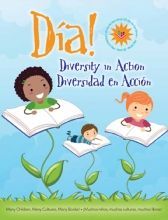
This year, I had the honor of joining some very insightful, experienced, and passionate people on a panel sponsored by the CBC Diversity. The session touched on what CBC Diversity has been up to, with a focus on the Diversity 101 series we feature on our blog, as well as ALSC’s Día initiative, dedicated to helping librarians work with their community to build interest and excitement for literacy dedicated to all children from all backgrounds. You can find out more about Día (short for “Diversity in Action) here. (Shameless plug—their book list includes Ask My Mood Ring How I Feel by Diana Lopéz!)
Last year’s panel, which you can listen to here, introduced librarians to the CBC Diversity committee and our mission to increase diversity on all levels of publishing, from our authors and the stories they create to the professionals working in every level from this field. And we in turn learned from a few participating librarians just how brightly passions burned for more attention to this mission.
This year, we brought a little more diversity to the panel. By diverse I mean that we included a terrific librarian representative (Ana-Elba Pavon from the Oakland Public Library) as well as a larger group of editors from a range of publishers (Dan Ehrenhaft of Soho Teen, Wendy Lamb of Penguin Random House, Cheryl Klein of Scholastic, who was our moderator, and me, representing Little, Brown Books for Young Readers).
I won’t go into the ditzy details of the conversation, since an audio version will be available in the next couple of weeks. But I can share some helpful takeaways from our overall conversation, prompted by organic discussion among the panelists and the audience members who came up during the Q&A session.
Generally, a panel consists of experts who share insight and experience with an audience there to learn. In our case, I felt the tone was much different. Under the excellent guidance of Cheryl, our conversations were more centered on what we learned from the resources provided by the Diversity committee and blog and how that has shaped how we approach the books we edit and acquire. We were there to demonstrate how there’s always something more to be learned and how nobody is a true expert. We discussed how some of the Diversity 101 posts have opened our eyes to how marginalized characters are treated in books, in a micro-aggressive (or sometimes flat out aggressive) way, like The Disabled Saint, where Kayla Whaley discusses how disabled characters are often fodder for “inspiration porn” and Alma Flor Ada’s deeply thoughtful and insightful post about the nuances and complexities of Spanish and how to use and respect the language.
While these posts are eye-opening and educational, we editors often find them intimidating as well. There is so much to think about, and when we push ourselves to work on books featuring diversity, often editing from “outside” our experience, we feel like we’re putting ourselves out there and risking criticism. One request is for all of us, both in the publishing and library world, to try to be open-minded in terms of how successful we personally deem these books. Fear of criticism should not be one of the challenges in bringing good, diverse books to the world, and while we are always aiming for authenticity and top-notch literary value, sometimes we have to step back and relax a little. Dan and Wendy spoke about a future post, where they will touch on this topic in more detail.
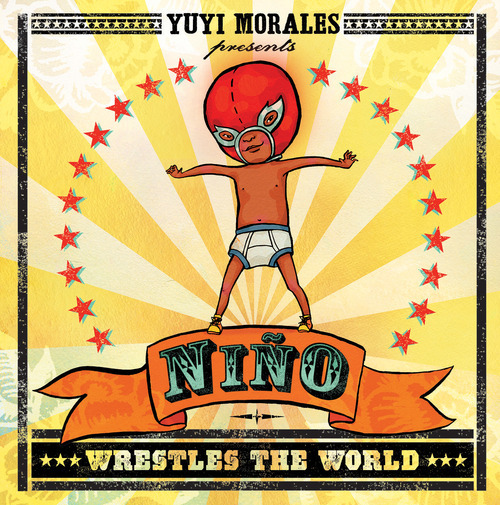
Ana-Elba shared details about Día and the programming that can be developed around this initiative, directing folks to the Día website, which is packed with information. While Día began with a Latino focus, it now encompasses all kinds of diversity. Ana-Elba shared an example of a good book for Día for this year’s celebration, one that will pull in all readers while expertly incorporating a multicultural theme—Yuyi Morales’s Nino Wrestles the World, which we learned on Monday was this year’s Pura Belpré Illustrator winner. The 17th annual Día de los libros/Día de los Ninos will be held on April 30th this year.
We had some great suggestions from the audience, such as including more diverse books in book fairs, encouraging book clubs and stores to take these titles, as well as using resources like the Luminarias, a group of Texas librarians who actively reach out to non-Spanish speaking educators. Shelley Diaz of School Library Journal also shared that the magazine will be dedicating an issue this spring to diversity.
The biggest eye-opener was during the Q&A, where Reforma member Oralia Garza de Cortés asked publishers to be more transparent about our numbers, which meant our stats in terms of the diverse books and authors we publish. She said she felt there were walls between the librarians and publishers, and that they often feel that they aren’t able to reach us. As we sat there, on a panel behind a table a few yards away from the audience, we all realized that perhaps the forum could change for future events like these. Rather than a panel, we can consider an open discussion, where ideas can be shared and cultivated, and to assure that the only walls are the ones that librarians and publishers can break down together, side-by-side.
-
Barnes & Noble Releases an Exclusive Collector’s Edition of ‘Looking For Alaska’
“Although B&N quietly launched the exclusives program several years ago, it is only in the past year that it has started to gain traction with the publication of another Green …
-
Teachers and Librarians: Apply for the Ezra Jack Keats Minigrants!
“We are dedicated to continuing our direct support to exceptional educators whose program ideas will foster creativity, cooperation and interaction with a diverse community,” says Deborah Pope, Executive Director of …
-
Sundance Film Festival Alums Marius Markevicius & Ben York Jones Partner on Best-Selling WWII-Era Novel ‘Between Shades of Gray’
Park City, UT – Sorrento Productions and Tauras Films announced today that they have optioned the film rights to Ruta Sepetys’ New York Times Bestselling WWII-era novel, Between Shades of Gray. The screenplay adaptation was …
-
National Ambassador Kate DiCamillo Wins Her Second Newbery Medal
The award was announced on Monday January 27th by the American Library Association. DiCamillo, a popular and widely acclaimed author, won the Newbery medal for the first time eight years …
-
American Library Association Announces 2014 Youth Media Award Winners
PHILADELPHIA — The American Library Association (ALA) today announced the top books, video and audio books for children and young adults – including the Caldecott, Coretta Scott King, Newbery and …
-
ABA Bookstores: Register Now for Find Waldo Local This Summer
Find Waldo Local stemmed from a similar event at Eight Cousins Bookstore in Falmouth, MA. As in previous years, the number of participating ABA bookstores is limited to 250. Online …
-
Nominate Your Favorite YA Books of 2013: Time Is Running Out!
Just fill out the form on the Teenreads website by noon (ET) on Friday, January 31. You can vote for titles that are on the provided list or write in …
-
B.J. Novak signs with Penguin Young Readers Group to Publish Picture Book With No Pictures
New York, NY — Writer and actor B.J. Novak will publish a ground-breaking new “picture book” with Penguin Young Readers Group that reimagines storytelling for a young audience. THE BOOK …
-
Don’t Miss the CBC Diversity Newsletter!
Click to view CBC Diveristy Newsletter January v. 2 on GLOSSI.COM
-
What Can Publishers Do to Help Independent Bookstores?
For 2014, Flying Pig Bookstore Co-Owner Josie Leavitt unveiled a list of requests for publishing industry marketing executives. To help these businesses continue thriving, Leavitt suggests that they create digital …
-
Scholastic to Publish Picture Book by Nick Cannon and Mariah Carey
NEW YORK, NY—January 23, 2014—Scholastic, the global children’s publishing, education and media company, will publish a holiday children’s picture book by celebrity superstars Nick Cannon and Mariah Carey. Roc and Roe’s Twelve Days of …
-
CBC Diversity: Industry Q&A with Publisher Donna Bray
Interview by Caroline Sun
Please tell us about the most recent diverse book you published.
I have two answers for that, both examples of the different ways I would define “diversity”:
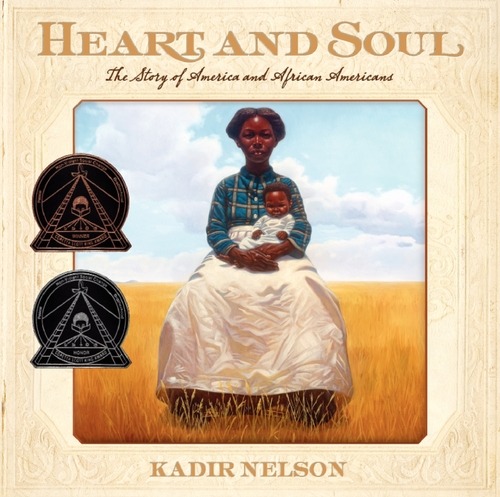
Heart and Soul: The Story of America and African Americans by Kadir Nelson, a fully-illustrated work of narrative nonfiction, tells the story of the African American experience through the lens of an “everywoman,” an elder whose own family history has spanned decades and intersected with defining moments in American history. It’s an extraordinary book which received a Coretta Scott King Medal and an Honor, for writing and illustration respectively. Kadir is an African American writer and artist, writing about his own heritage, which is probably the first way anyone might define a diverse book.

The Burning Sky by Sherry Thomas is a less obvious example. It is a teen fantasy, the first in a trilogy, set partly in 19th century England and partly in a magical world parallel to our own. What makes the book “diverse” for me is that Sherry is a Chinese immigrant who came to the States when she was thirteen years old.
While I actively look for stories in which the authentic experience of race, ethnicity, or religion is explored, I also think we need more diversity of authors, period, who just write great stories, whether or not they feature diverse characters. I would never want diverse authors to be pigeonholed.
What is one factor holding you back from publishing more diverse books OR what’s the biggest challenge for publishing companies who want to feature more diverse titles?
There are really two factors to my mind: sales and submissions.
I’ll speak to sales first. As other editors have explained so eloquently (the wonderful Rosemary Brosnan and Phoebe Yeh, to name two), it’s a huge challenge for a mainstream publisher to sell the extraordinary diverse books we publish. Often I read eloquent articles by booksellers, teachers, and librarians, bemoaning the lack of diverse books. And while I do agree that there ought to be more, I can’t help but look back with chagrin on the many beautiful, original, well-reviewed books I’ve published in this vein which have languished. Discoverability, an issue for so many books, seems to be that much more of a hurdle when it comes to diverse books.
I do think one of the problems is that some schools, libraries, and bookstores will only stock diverse titles if they have a population of that particular race or ethnicity – they might not think they need titles about Latinos or Arabs or African Americans if theirs is, say, a largely white or Asian clientele. This is quite frustrating for me as a publisher, and terribly limiting for those poor kids who are shut out from so many books that could open their eyes to a much wider range of experiences. Do we stop shelving historical fiction if none of our students have time-traveled from the 18th century? Or cut the budget for books set in Middle Earth if we don’t have a hobbit minority in the community? Why wouldn’t an African American child relate to an Indian protagonist, or a white child to a Korean narrator? The best books will explore the universality of the human condition beyond the specific profile of a character. It’s going to continue to be difficult to sell diverse books until this mindset changes.
The other challenge is submissions. Sadly, I simply do not get many submissions from writers of diverse backgrounds. There are probably many reasons for this – the publishing establishment (editors and agents) is largely white (and what might be called “elite” – upper-middle and upper-class; the lack of class and economic diversity is a whole other problem in this industry, but I digress…). Diverse writers may have less access or exposure to the publishing process. Several years ago, frustrated by the paucity of diverse submissions, I established a writing contest for diverse middle-grade novels. We received hundreds of submissions, and that first year we gave awards to two writers (a miracle!): Kashmira Sheth for Blue Jasmine, about an Indian immigrant, and Jackie Brown for Little Cricket, about a Hmong immigrant. Subsequent years, however, yielded nothing. And most of the submissions were not written by writers of diversity, unfortunately. Eventually I had to abandon the contest, as I had a small staff, it was a huge amount of work to read all the manuscripts, and all for very little result.
I was also involved in the imprint Jump at the Sun at Disney, where I published several titles about the African American experience. While we did have success with awards and acclaim, nonfiction biographies tended to be the bestsellers, and sold largely in the library market. I wish we could have had more mainstream trade or mass market breakout hits.
What I have always wanted is to publish a much wider titles in which the main characters are authentically African American, or Asian, or Mexican, in which racial or ethnic identity is just part of the story, not the whole story. On the Balzer + Bray list we publish Crystal Allen (How Lamar’s Bad Prank Won a Bubba-Sized Trophy; The Laura Line) – she writes very funny, heartfelt middle-grade books that happen to feature African American characters. She deserves a much wider audience. Go buy her books! :)
What is an example of a current bestselling diversity title?
On our list I would have to say Heart and Soul by Kadir Nelson. First and foremost, it is simply a brilliant and beautiful book that does what no other book for children has done. It received glowing reviews and awards. And of course, Kadir is a much-admired and respected master of his craft. In recent months especially we’ve seen an uptick in sales, which can likely be attributed to the Common Core State Standards. I know CCSS is controversial, but if it can contribute to stronger sales and a longer life for diverse books, then I’m delighted.
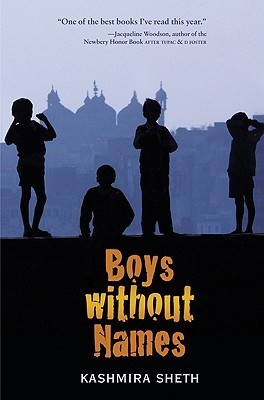
Another book that seems to have benefited from CCSS is Kashmira Sheth’s novel about child labor in India, Boys Without Names.
Who would you consider to be a diversity pioneer in children’s and/or young adult literature?
In my career, that person would be Lisa Holton. Jump at the Sun was entirely her brainchild. Watching her advocate for the imprint and its books and authors was a real education for me. She and founding editor Andrea Pinkney flew to Los Angeles to personally pitch The Cheetah Girls to the Disney Channel, and didn’t relent until the series was picked up. When she got resistance from accounts about African American titles not being right for a chain’s “demographic,” she pushed back. Lisa made JATS titles major leads on the list. And beyond JATS, she encouraged the acquisition of any kind of diverse book. She was a strong proponent of underrepresented minorities in children’s books, and considered inclusive literature a form of social justice. She had a lasting influence on me as an editor, as she has with so many others.
If you have an author who wants to write about characters outside of his/her own background, how do you generally handle that? Do you encourage your author to dive into research, or do you dissuade your author from venturing into what is unfamiliar to them?
This is tricky. I do think this has been done successfully: Patricia McCormick’s Sold is a great example. And in 2015 I’m publishing a book about a gay teen boy, written by Becky Albertalli, a straight woman, called Simon vs. The Homo Sapiens Agenda. So while I’m open to it, I’m also slightly wary. I think writing cross-culturally can of course be done by a writer of great talent and empathy, but it requires extra sensitivity.
Tell us about your editing process. When you edit cross-culturally, how do you ensure that the book gets a culture with which you might not be as familiar “right”?
As with my editing process on any book, I ask a lot of questions – and the less familiar a culture is to me, the more questions I’ll ask! And depending on the specificity of the subject matter and the degree of the author’s connection to the culture, I might even get outside “expert” readers for a manuscript.
If you could receive a manuscript about one culture or subculture that you don’t normally see, what would it be?
I can almost never say what I’m looking for in any category – my list is wide-ranging and a little eclectic, and I like to be surprised. But if I had to give a more helpful answer… I’d love to see more stories set in immigrant communities in this country. More Arab or Muslim stories would be welcome, as well as stories set in locations around the world that are in the news. I am fascinated by insular religious cultures and the perspective of the differently-abled. But really, I’m open – so surprise me!
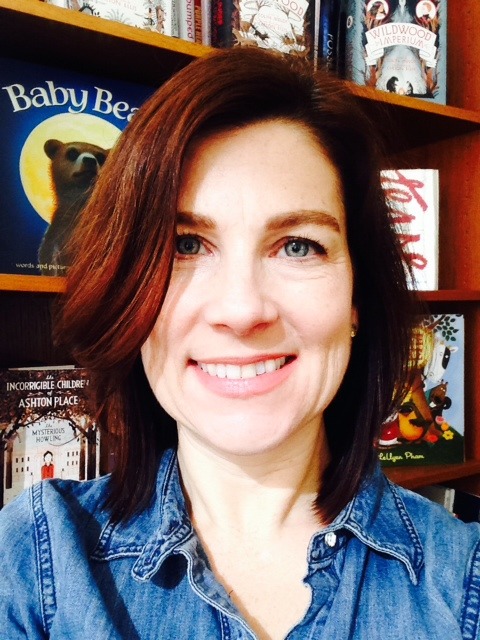
Donna Bray is Co-Publisher of Balzer + Bray, an imprint of HarperCollins Children’s Books. She feels lucky to be able to work with many gifted authors and illustrators, including Kadir Nelson, Sherry Thomas, Sara Pennypacker, Amanda Maciel, Sam Garton, Maryrose Wood, Adam Rex, LeUyen Pham, Colin Meloy and Carson Ellis, to name just a few.
-
2014 Sydney Taylor Book Awards Announced by AJL
BEACHWOOD, Ohio — Laurel Snyder and Catia Chien, author and illustrator of The Longest Night: A Passover Story, Patricia Polacco author and illustrator of The Blessing Cup, and Neal Bascomb, author ofThe Nazi Hunters: How a Team of Spies and …
-
‘If I Stay’ Movie to Be Released in August 2014
Penguin Young Readers Group first released the book on April 2, 2009. A sequel, entitled Where She Went, followed on April 5, 2011. “For those not in the know, If …
-
A California-Based 7-Eleven Gives Away Slurpees to Young Readers
The books were sourced through donations from the owners’ son and local schools. “The project, Prakash says, is his way of addressing the the Central California town’s above-average crime rates…Corporate executives …
-
Penguin Young Readers Group Acquires Highly-Anticipated Debut Novel ‘An Ember in the Ashes’ in Major Pre-Empt
New York, NY — Razorbill, an imprint of Penguin Young Readers Group, has acquired Sabaa Tahir’s highly-anticipated debut novel An Ember in the Ashes in a major pre-empt. Film rights have already …



















